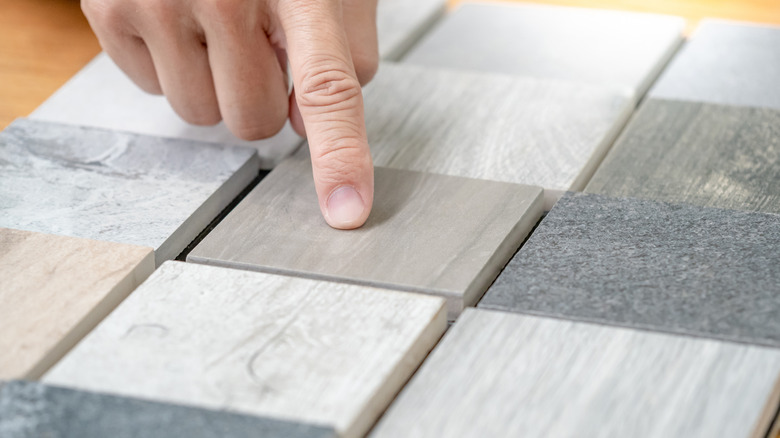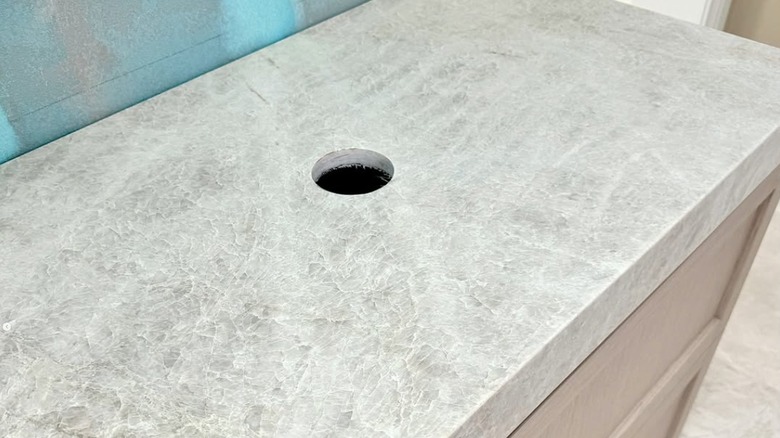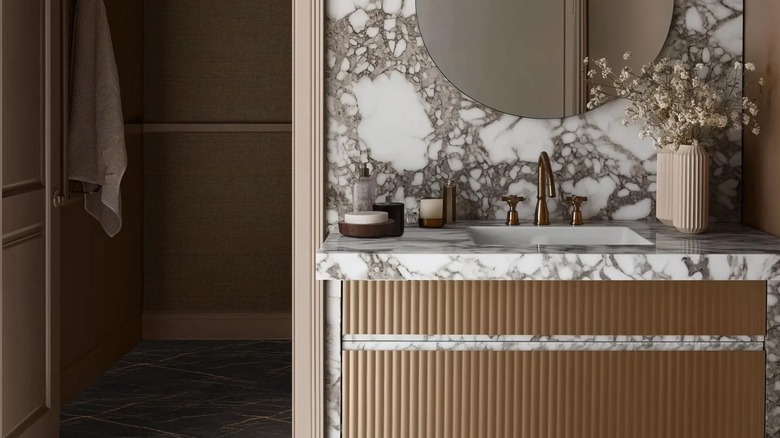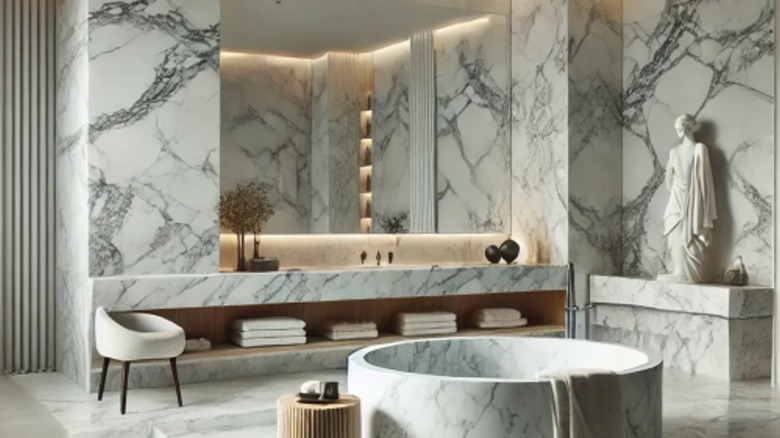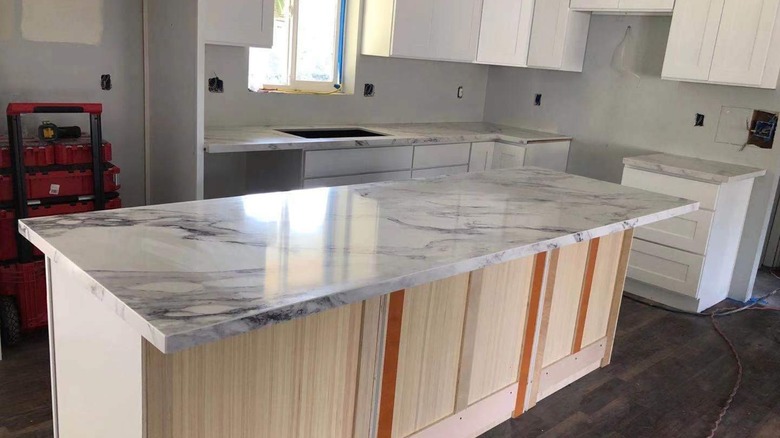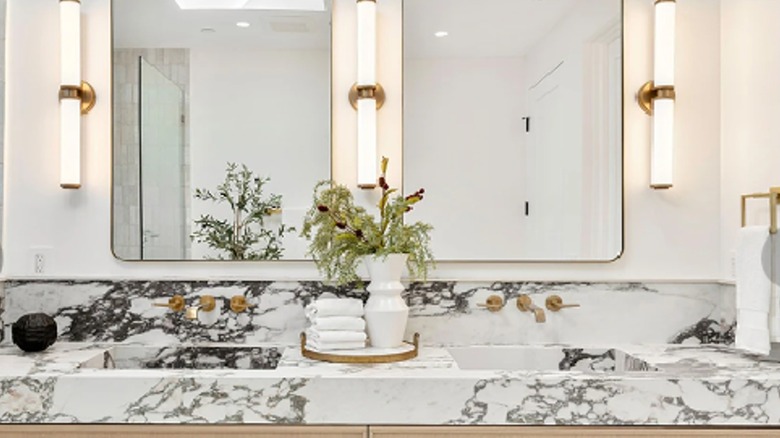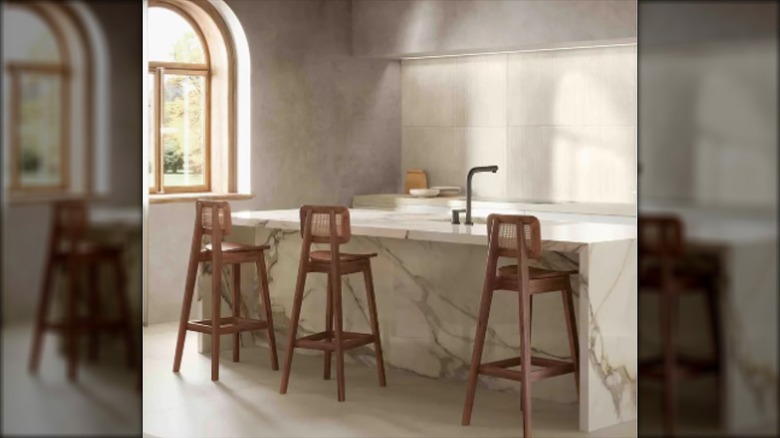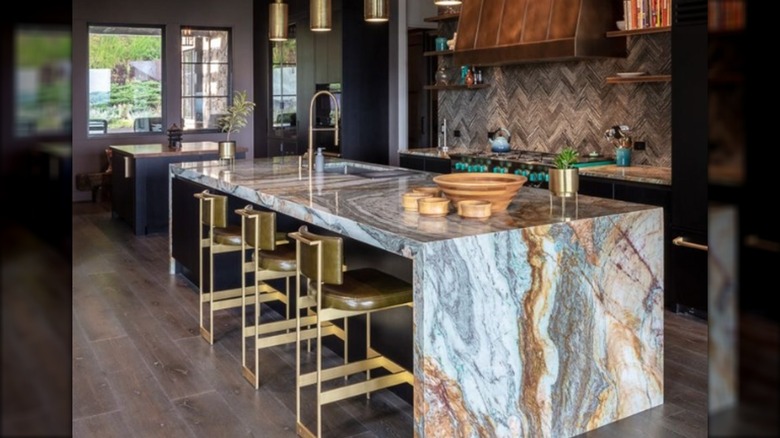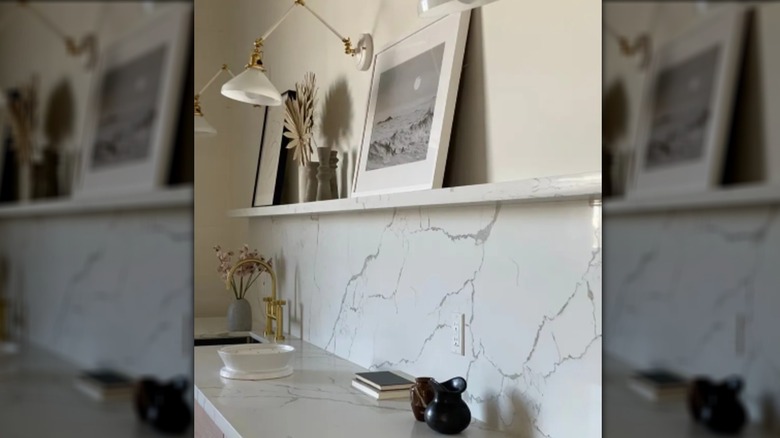10 Countertop Veining Pattern Trends For A Unique And Bold Look
We may receive a commission on purchases made from links.
Stone countertops come in a gorgeous variety of materials, shades, and styles, making them one of the most popular countertop options in kitchens or bathrooms. While homeowners usually make choices for their counters based on the durability of the material and the price point of installation, other considerations like color and veining can play a huge role in their selection, particularly when following more dramatic kitchen countertop trends. Veining, even when combined with traditional stone colors like gray and white, can have a dramatic effect. This means that there is a wealth of veining patterns to consider that can make a bold statement, including everything from dramatic black spiderweb marble with gold-and-white veining to rich blue cloud veined marble that mimics the look of the sea.
The visual impact of stone — whether it's marble, granite, or quartz — can hinge on much more than just color or material, including what you surround it with. Lighter marble with subtle linear veins, for instance, can fade into the background in a traditional white kitchen or — when combined with dark cabinets —take center stage. Veining can also create certain effects, like lines that direct the eye along the surface, making an island or a counter feel wider or longer than it is. Busy patterning, like web and the mosaic-style lines of breccia veining, can be a great way to add texture and pattern that doesn't fade so much into the background as other marbles. Some patterns are seen across many different stone varieties, while others are associated with specific materials or kinds of stone.
Linear veining
One very popular kind of veining found in marble and other stones, linear veining runs in parallel lines across the stone, offering a bit more structure to the look. Relative to the long direction of the stone, veining can run vertically, horizontally, or diagonally. But the long, continuous lines will generally not cross. For a more subtle look, opt for small variations in darkness between the primary stone color and its veining, or go higher-contrast (either light-on-dark or dark-on-light) for a bolder look.
Web veining
Web veining mimics the shape and look of spiderwebsor fractured Kintsugi pottery, meaning a more elaborate network of crossing and crisscrossing lines, as well as lines radiating from a central point. Line thickness varies from thick to fine. Patterns vary from large openings between the lines to more crowded configurations providing an interesting mix of texture. This veining can look quite busy, especially if the veins are a dramatically different shade from the stones base color.
Feather veining
Feather veining is all about soft, organic lines with subtle color differences, usually multi-tonal but in a range of close shades like cream, beige, and gray. It sometimes has the look of smoke or fog with lines feeling like they're moving in different directions. Generally found in Carrera marble, there are also options in quartz. This is a great way to get the textural effect of spiderweb veining in a more subtle way that calls less attention to itself. Because it is light in color, it pairs especially well with darker wood cabinetry for an elevated and bold high-contrast look.
Breccia veining
Almost the opposite of feather veining's soft curves, Breccia veining delights in sharper, edged lines, giving the stone a cracked or mosaic look. Darker marbles with light veining, in shades like red and black, can read as sophisticated and dramatic when used in stone countertop ideas for a luxe-looking bathroom. Since it can be visually busy, it often fits well in more minimalist spaces as an accent, where it can be the star of the show, adding a unique pattern to an otherwise neutral space.
Statuary veining
Marble with statuary veining is typically composed of high-contrast veining on a white, cream, or pale gray background. It's associated with a high-end look and reflects the veining patterns and colors found on classic statuary. It can create an upscale look for counters, and is a great option if you want a lighter marble with a lot of interest that the dramatic veining brings.
Cloud veining
Usually in shades of gray or beige, this veining pattern mimics the look of drifting clouds, making it a pretty, soothing option that can be subtle in neutral shades or bold and dynamic with veining in darker colors like black, blue, or slate gray with white contrast. Multicolored cloud veining can create dramatic patterning that is perfect as statement marble to carry throughout the entire kitchen — counters, backsplash, and walls.
Arabescato marble veining
A mix of long lines and swirling, cloud-like shapes, this style of marble is found mostly in Italy. It usually appears in softer whites and grays, making it a nice solution if you're uncertain whether you want longer lines or more rounded, organic shapes defining your veining. It can also be beautifully dramatic when carried up the backsplash or full wall for a statement marble look.
Calacatta marble veining
Another variety of distinctive marble, Calacatta is often used in buildings like cathedrals and castles. It Is known for its pristine white background with soft brown, beige, or gold veining. It's often linear in overall design, but with smaller segments branching away from larger veins. This is a perfect marble if you want a warmer look than many gray-veined stones provide.
Thick-veined marble
One way to get a dramatic signature look instantly is to choose a marble or other stone variety with very thick veins. These veins often stand out in high-contrast from the background in a variety of shades on the same stone. These mesmerizing patterns often bring in multiple colors to create a swirling effect that looks like clouds or the ocean from space.
Tree veining
This veining, sometimes called branch veining, is often seen in marble. The pattern is made up of very fine, smaller, and larger veins recalling the branches of trees or other botanical elements. It can be a beautiful, organic look when used for counters due to this patterning. It combines well with natural wood and other plants and greenery as accents, making it perfect for rustic kitchens or to bring biophilic design into your home.
